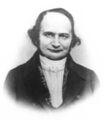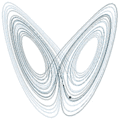Template:Selected anniversaries/December 10: Difference between revisions
No edit summary |
No edit summary |
||
| Line 2: | Line 2: | ||
File:Statue of Ibn Rushd in Cordoba.jpg|link=Ibn Rushd (nonfiction)|1198: Polymath [[Ibn Rushd (nonfiction)|Ibn Rushd]] (Averoess) dies. He wrote on logic, Aristotelian and Islamic philosophy, theology, the Maliki school of Islamic jurisprudence, psychology, political and Andalusian classical music theory, geography, mathematics, and the mediæval sciences of medicine, astronomy, physics, and celestial mechanics. | File:Statue of Ibn Rushd in Cordoba.jpg|link=Ibn Rushd (nonfiction)|1198: Polymath [[Ibn Rushd (nonfiction)|Ibn Rushd]] (Averoess) dies. He wrote on logic, Aristotelian and Islamic philosophy, theology, the Maliki school of Islamic jurisprudence, psychology, political and Andalusian classical music theory, geography, mathematics, and the mediæval sciences of medicine, astronomy, physics, and celestial mechanics. | ||
||1317 | ||1317: The "Nyköping Banquet" - King Birger of Sweden treacherously seizes his two brothers Valdemar, Duke of Finland and Eric, Duke of Södermanland, who were subsequently starved to death in the dungeon of Nyköping Castle. | ||
File:Johannes Stöffler.jpg|link=Johannes Stöffler (nonfiction)|1452: Mathematician, astronomer, astrologer, priest, maker of astronomical instruments, and professor [[Johannes Stöffler (nonfiction)|Johannes Stöffler]] born. | File:Johannes Stöffler.jpg|link=Johannes Stöffler (nonfiction)|1452: Mathematician, astronomer, astrologer, priest, maker of astronomical instruments, and professor [[Johannes Stöffler (nonfiction)|Johannes Stöffler]] born. | ||
||1588 | ||1588: Isaac Beeckman born ... scientist and philosopher. | ||
||1626 | ||1626: Edmund Gunter dies ... mathematician and academic. | ||
File:Sir Isaac Newton by Sir Godfrey Kneller.jpg|link=Isaac Newton (nonfiction)|1684: [[Isaac Newton (nonfiction)|Isaac Newton]]'s derivation of Kepler's laws from his theory of gravity, contained in the paper ''De motu corporum in gyrum'', is read to the Royal Society by Edmond Halley. | File:Sir Isaac Newton by Sir Godfrey Kneller.jpg|link=Isaac Newton (nonfiction)|1684: [[Isaac Newton (nonfiction)|Isaac Newton]]'s derivation of Kepler's laws from his theory of gravity, contained in the paper ''De motu corporum in gyrum'', is read to the Royal Society by Edmond Halley. | ||
||1799 | ||1799: France adopts the metre as its official unit of length. | ||
File:Carl Gustav Jacob Jacobi.jpg|link=Carl Gustav Jacob Jacobi (nonfiction)|1804: Mathematician and academic [[Carl Gustav Jacob Jacobi (nonfiction)|Carl Gustav Jacob Jacobi]] born. He will make fundamental contributions to elliptic functions, dynamics, differential equations, and number theory. | File:Carl Gustav Jacob Jacobi.jpg|link=Carl Gustav Jacob Jacobi (nonfiction)|1804: Mathematician and academic [[Carl Gustav Jacob Jacobi (nonfiction)|Carl Gustav Jacob Jacobi]] born. He will make fundamental contributions to elliptic functions, dynamics, differential equations, and number theory. | ||
| Line 22: | Line 22: | ||
File:Thomas Seebeck.jpg|link=Thomas Johann Seebeck (nonfiction)|1831: Physicist and academic [[Thomas Johann Seebeck (nonfiction)|Thomas Johann Seebeck]] dies. He discovered the thermoelectric effect. | File:Thomas Seebeck.jpg|link=Thomas Johann Seebeck (nonfiction)|1831: Physicist and academic [[Thomas Johann Seebeck (nonfiction)|Thomas Johann Seebeck]] dies. He discovered the thermoelectric effect. | ||
||1850 | ||1850: François Sulpice Beudant dies ... mineralogist and geologist. | ||
|| | ||1851: Karl Freiherr von Drais born ... forest official and significant inventor in the Biedermeier period. Dandy horse. Pic. | ||
|| | ||1860: Margaret Eliza Maltby born ... physicist notable for measurement of high electrolytic resistances and conductivity of very dilute solutions. | ||
|| | ||1868: The first traffic lights are installed, outside the Palace of Westminster in London. Resembling railway signals, they use semaphore arms and are illuminated at night by red and green gas lamps. | ||
||1901 | ||1896: Alfred Nobel dies ... chemist and engineer, invented Dynamite and founded the Nobel Prize. | ||
||1901: The first Nobel Prizes are awarded. | |||
||1906: Walter Henry Zinn born ... nuclear physicist who was the first director of the Argonne National Laboratory from 1946 to 1956. He worked at the Manhattan Project's Metallurgical Laboratory during World War II, and supervised the construction of Chicago Pile-1, the world’s first nuclear reactor, which went critical on December 2, 1942, at the University of Chicago. At Argonne he designed and built several new reactors, including Experimental Breeder Reactor I, the first nuclear reactor to produce electric power, which went live on December 20, 1951. Pic. | ||1906: Walter Henry Zinn born ... nuclear physicist who was the first director of the Argonne National Laboratory from 1946 to 1956. He worked at the Manhattan Project's Metallurgical Laboratory during World War II, and supervised the construction of Chicago Pile-1, the world’s first nuclear reactor, which went critical on December 2, 1942, at the University of Chicago. At Argonne he designed and built several new reactors, including Experimental Breeder Reactor I, the first nuclear reactor to produce electric power, which went live on December 20, 1951. Pic. | ||
| Line 50: | Line 52: | ||
||1968: Japan's biggest heist, the still-unsolved "300 million yen robbery", is carried out in Tokyo. | ||1968: Japan's biggest heist, the still-unsolved "300 million yen robbery", is carried out in Tokyo. | ||
||1973 | ||1973: Wolf V. Vishniac dies ... microbiologist and academic. | ||
File:Lorenz_attractor_trajectory-through-phase-space.gif|link=Lorenz system (nonfiction)|1989: Animated [[Lorenz system (nonfiction)|Lorenz system]] diagram celebrates the life and work of [[Ada Lovelace (nonfiction)|Ada Lovelace]]. | File:Lorenz_attractor_trajectory-through-phase-space.gif|link=Lorenz system (nonfiction)|1989: Animated [[Lorenz system (nonfiction)|Lorenz system]] diagram celebrates the life and work of [[Ada Lovelace (nonfiction)|Ada Lovelace]]. | ||
||Wang Ganchang | ||1998: Wang Ganchang dies ... nuclear physicist. He was one of the founding fathers of Chinese nuclear physics, cosmic rays and particle physics. Pic. | ||
||2009 | ||2009: Vladimir Teplyakov dies ... soldier and physicist. | ||
||2010 | ||2010: John Fenn dies ... chemist and academic, Nobel Prize laureate. | ||
||Ernst Paul Specker | ||2011: Ernst Paul Specker dies ... mathematician. Much of his most influential work was on Quine’s New Foundations, a set theory with a universal set, but he is most famous for the Kochen–Specker theorem in quantum mechanics, showing that certain types of hidden variable theories are impossible. | ||
File:The Eel receives news from informants.jpg|link=The Eel's henchmen|2014: The Eel receives [[The Eel's henchmen|news from informants]]. | File:The Eel receives news from informants.jpg|link=The Eel's henchmen|2014: The Eel receives [[The Eel's henchmen|news from informants]]. | ||
</gallery> | </gallery> | ||
Revision as of 20:07, 31 August 2018
1198: Polymath Ibn Rushd (Averoess) dies. He wrote on logic, Aristotelian and Islamic philosophy, theology, the Maliki school of Islamic jurisprudence, psychology, political and Andalusian classical music theory, geography, mathematics, and the mediæval sciences of medicine, astronomy, physics, and celestial mechanics.
1452: Mathematician, astronomer, astrologer, priest, maker of astronomical instruments, and professor Johannes Stöffler born.
1684: Isaac Newton's derivation of Kepler's laws from his theory of gravity, contained in the paper De motu corporum in gyrum, is read to the Royal Society by Edmond Halley.
1804: Mathematician and academic Carl Gustav Jacob Jacobi born. He will make fundamental contributions to elliptic functions, dynamics, differential equations, and number theory.
1815: Mathematician and writer Ada Lovelace born. She will do pioneering work in symbolic languages for machine processes, developing what will later be called computer programs for Charles Babbage's early mechanical general-purpose computer, the Analytical Engine.
1831: Physicist and academic Thomas Johann Seebeck dies. He discovered the thermoelectric effect.
1959: Chrome Plover, the famous musical electroplating ensemble, demonstrates new controller units.
1967: Project Gasbuggy underground nuclear test detonation in rural northern New Mexico. Its purpose was to determine if nuclear explosions could be useful in fracturing rock formations for natural gas extraction.
1989: Animated Lorenz system diagram celebrates the life and work of Ada Lovelace.
2014: The Eel receives news from informants.









